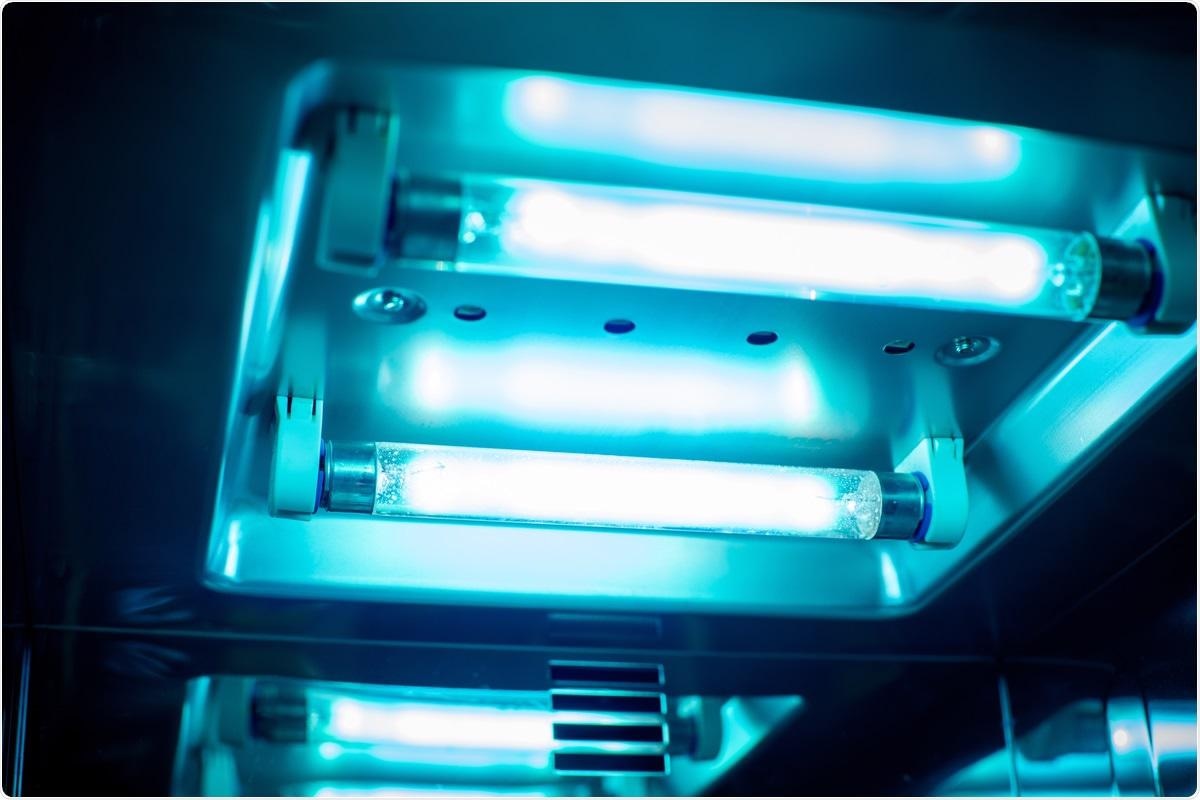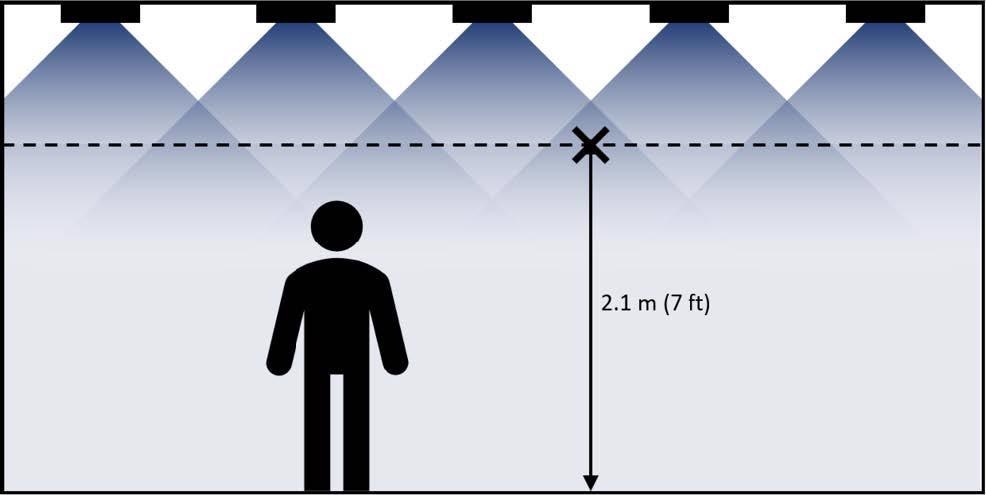The coronavirus disease 2019 (COVID-19) pandemic brought the need for proper sanitization to the forefront. Many companies found their employees’ time is used to constantly wipe down surfaces, while schools had to balance the need for fresh air with heating bills and cold children in the winter.
Many sanitization systems are slow and costly; however, in a recent Journal of Research of the National Institute of Standards and Technology study, researchers describe a method to safely sanitize an occupied room using ultraviolet (UV)-C radiation.

Study: Inactivation of Pathogens in Air Using Ultraviolet Direct Irradiation Below Exposure Limits. Image Credit: Nor Gal / Shutterstock.com
What is a DIBEL system?
Direct irradiation below exposure limits (DIBEL) requires the use of low-intensity light sources including light-emitting diodes (LEDs) and excimer lamps to irradiate a room with UV-C light at a level sufficient to inactivate viruses without causing unwanted harm to humans within the room. Most current sanitization systems require circulating air, often directly irradiated within the air circulation unit, which provides intense UV energy to a small area.
Generally, DIBEL units consisting of these light sources are mounted on the ceiling of the room to be sterilized. Any excess radiation emitted into the room will be absorbed by the walls or floor of the room.
When comparing the inactivation rates for viruses in air being irradiated by UV-C, the 90% inactivation dose (D90) is calculated in units of joules per square meter. Thus, the inactivation rate is often quantified using this value and the UV susceptibility constant for the pathogen.
In typical air moving UV disinfection systems, there is a small zone of high-intensity UV which air passes through regularly. However, the overall pathogen inactivation rate (ACHeq) is limited by the speed of the air-exchange rate which, in this case, is limited by the speed of the fans.

Typical application of DIBEL technology in an occupied room.
Advantages of DIBEL system
Through the use of a DIBEL system, the pathogen inactivation rate is inversely proportional to the D90 value of the pathogen and is, therefore, relative to the target pathogen. For the severe acute respiratory syndrome coronavirus 2 (SARS-CoV-2), UV air disinfection methods associated with ACHeq above one were much more effective at removing viral particles, as the virus is deposited on floors and surfaces at a rate of ~0.3/hour.
When examining the inactivation of infectious aerosol particles predicted using a model based on these factors, a typical heating, ventilation, and air conditioning (HVAC) system took 0.8 hours to reduce the concentration to about 10% of the original levels, while a well-ventilated medical facility took only 0.2 hours.
The beneficial effects of DIBEL as compared to these more conventional technologies are multifold. For example, continuous disinfection and direct radiation in an occupied area allow for more consistent and ongoing disinfection. This improves safety and allows for the system to be used with a minimum of active supervision.
A DIBEL system could be particularly useful in the medical field, as future research shows it can be safely used during surgical procedures and could thus provide an even greater degree of sanitization. Furthermore, this technology does not require air movement, thereby allowing disinfection in the space between infected and susceptible individuals.
Important safety considerations
UV-C LEDs tend to have poor electrical efficiency, low optical outputs and are often associated with high costs. However, the low optical output of these devices could be an advantage, as at 2.1 meters above floor level, the irradiance provided is at both an acceptable level to disable infectious particles and avoids any potential health risks for individuals using the area.
While UV radiation is harmful to humans, most risks are due to exposure to UV-A. The average exposure over one day due to a UV-C DIBEL system offers a similar level of irritation to the eyes and skin of around five minutes of exposure to sunlight.
However, the DIBEL system is associated with certain other potential hazards. For example, some materials may fade or discolor, as they do in sunlight, thereby making the system unsuitable to sanitize rooms with sensitive and valuable materials such as art.
Furthermore, the DIBEL system can also cause minor reductions in the growth speed of certain plants. While caution must be taken to ensure that the correct wavelengths and intensities of light are used, the system should be perfectly safe for humans to use.
Conclusions
Taken together, DIBEL systems could be of significant use to sanitize areas that are in constant use and can be easily and unobtrusively installed. While the current price of these systems may limit their widespread use, future research and adoption of the technology are likely to reduce this cost.
Journal reference:
- Allen, G. R., Benner, K. J., & Bahnfleth, W. P. (2021) Inactivation of Pathogens in Air Using Ultraviolet Direct Irradiation Below Exposure Limits. Journal of Research of the National Institute of Standards and Technology 126(126052). doi:10.6028/jres.126.052.